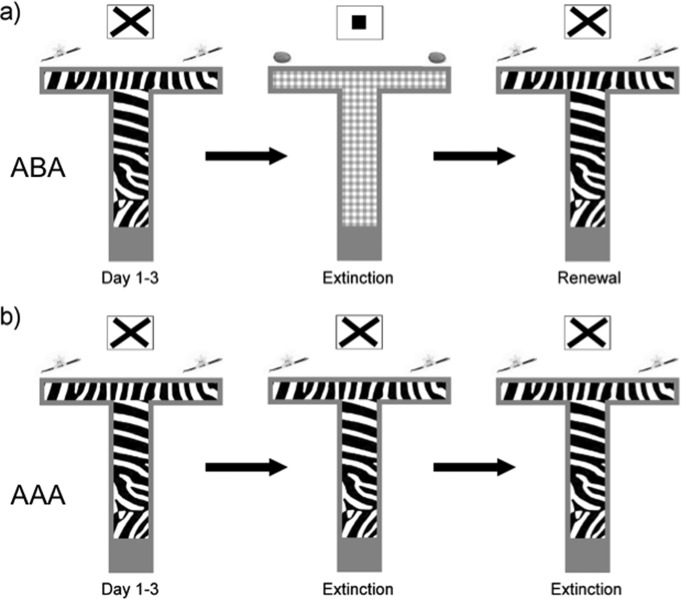FIGURE 1.

Paradigm for context-dependent extinction in the T-maze. Animals were trained to choose a specific goal arm (e.g., left) in a T-maze that contained both visuospatial and olfactospatial cues. Specifically the floor of the maze contained a specific pattern, extramural cues were present, and the goal arms each contained a faint odor (e.g., vanilla) at the ends of the arms. In the “AAA” paradigm these contextual conditions were kept constant throughout. In the “ABA” paradigm″ extinction learning was assessed in a context that contained a different floor pattern, different extramural cues, and a different odor in the goal arms. Animals underwent 3 days of acquisition comprising of 20 trials per day (D1–3). By Day 3, reward probability for correct arm choices was reduced to 25%. A correct choice level of 80% in the last 10 trials on Day 3 was deemed as the criterion for successful acquisition of the task. On Day 4 (D4) animals were either returned to the context in the absence of any reward (AAA paradigm) or were exposed to a new context (ABA paradigm, illustrated here, also unrewarded). On Day 5 (D5), animals were returned to the A context in the absence of reward. Here, renewal was expected in the first 10 trials, followed by extinction as the animals realized that no reward will be received.
